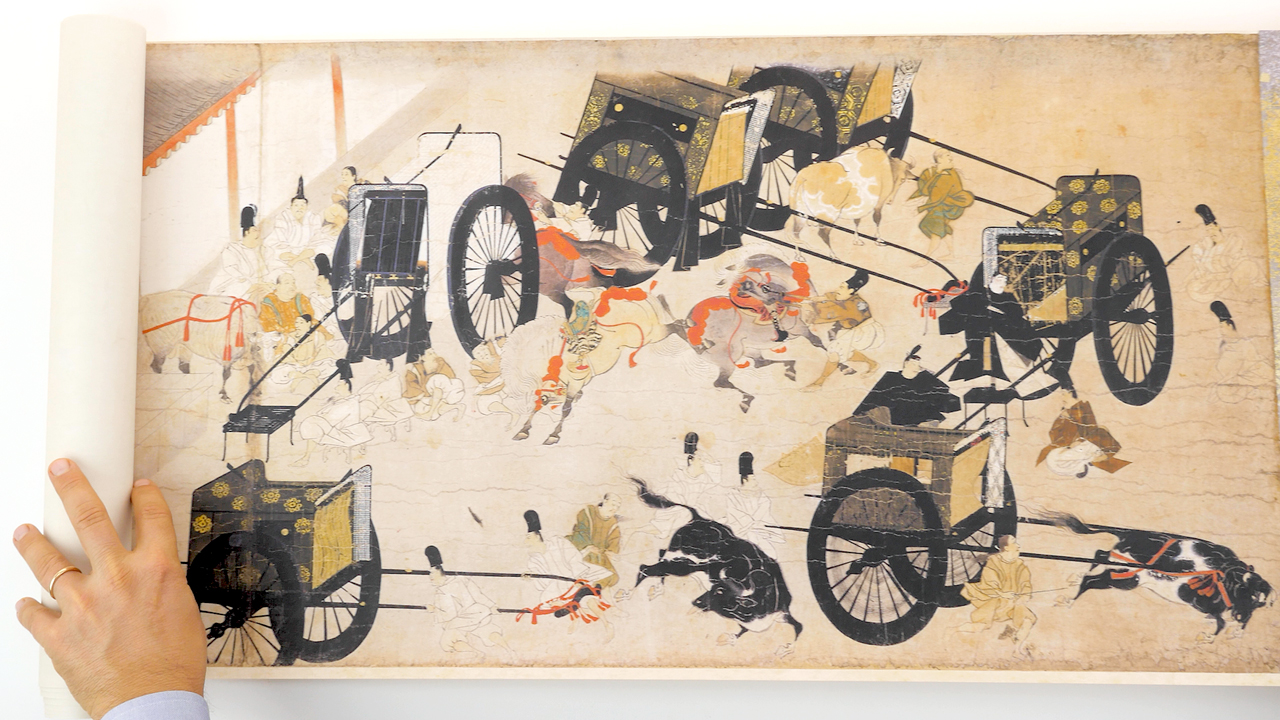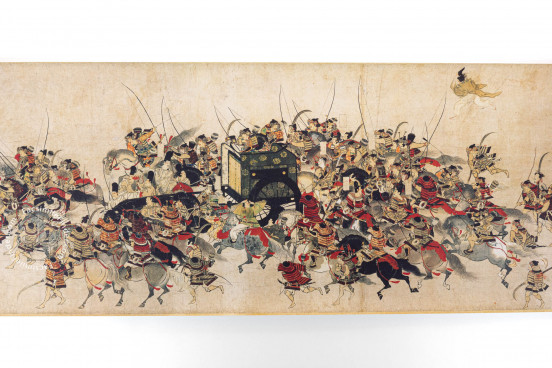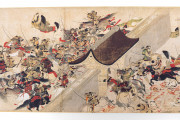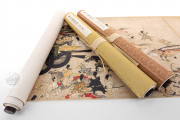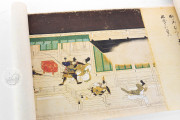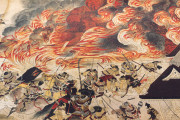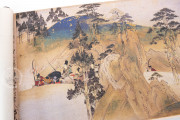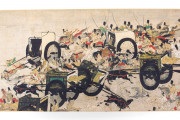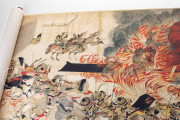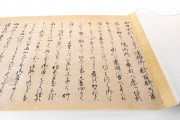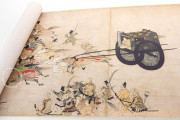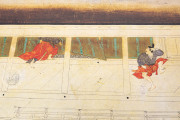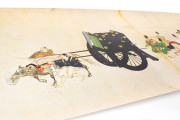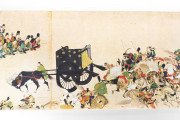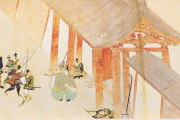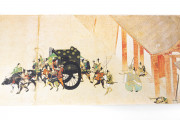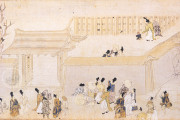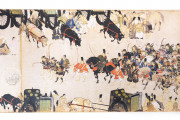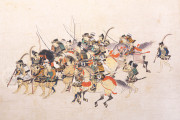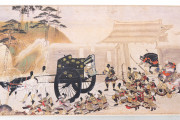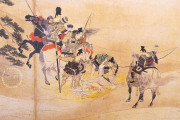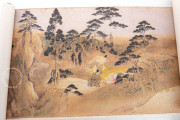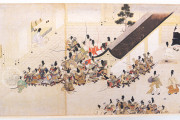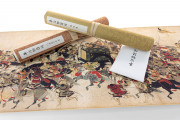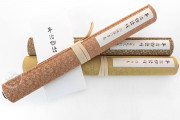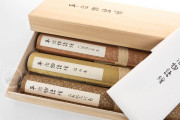The Heiji Monogatari-E, one of the oldest examples of the "battle picture" surviving today, is believed, from analyses of the style of the painting and calligraphy, to have been produced around the middle of the thirteenth century. The story which it illustrates relates the circumstances surrounding the Heiji disturbances, an unsuccessful coup d'état led by Fujiwara no Nobuyori and Minamoto Yoshimoto in 1159, at the end of the Heian period, in an attempt to get rid of Fujiwara no Michinori (Shinzei), trusted minister of the retired emperor Goshirakawa.
The celebrated Buddhist monastery on Mt. Hiei is believed to have been closely associated in various ways with the provenance of the Heiji Monogatari. Many of the descendants or followers of Shinzei who probably related episodes concerning the progress of the rebellion were Hiei monks. The monastery there was the focal point for Buddhist devotions aimed at protecting imperial rule and maintaining the stability of the dynastic order.
A Stunning Example of Japanese Court Painting
The chief characteristics of the work can be reduced to two. First, there is the skill with which large numbers of human figures are handled. Critics have long made special mention of the tautness of the composition, which portrays human figures in large groups that are displayed in orderly, well-regulated fashion.
Secondly, the techniques employed can be identified as those of the tsukurie, the traditional technique of painting that came to maturity in the Court Bureau of Painting during the Heian period. The tsukurie involves a series of processes: first, executing a preliminary picture in ink line, then applying color with mineral pigments, then finally restoring outlines and fine patterns in ink on top of the color.
In the Heiji Monogatari-E two methods are employed, the tsukurie technique as such, and another technique, tying up with the tradition of the Ban Dainagon Emaki, in which greater importance rests on the line drawing, the first outlines not being painted out but left visible (either by applying the color thinly or avoiding the lines completely in applying it). In view of these two stylistic features, the Heiji Monogatari-E's historical place has been located within the orthodox tradition of court painting.
A Mysterious Tremor
The calligraphic style of the accompanying text is in the line of the Gokyōgoku school initiated by Kujō Yoshitsune, which flourished in court society in the first half of the thirteenth century. Professor Matsubara Shigeru advanced the theory that the tremor detected in the calligraphy of the text, seemingly attributable to progressive physical infirmity, is evidence that the text was written by Yoshitsune's second son, Seizein Noriit, who reached a high position at court, sometime between 1249 and 1255, when Noriie was in his mid-fifties and nearing the end of his life.
One Masterpiece, Three Museums
Three scrolls of the Heiji Monogatari-E survive in their original scroll form: A Night Attack on the Sanjo Palace scroll (one scroll, Museum of Fine Arts, Boston), the Shinzei scroll (one scroll, Important Cultural Property, Seikado Bunko Art Museum, Tokyo), and the Flight to Rokuhara scroll (one scroll, National Treasure, Tokyo National Museum). Although the set is conjectured to have illustrated the whole of the story, the original number of scrolls is not known.
We have 1 facsimile edition of the manuscript "Heiji Monogatari E": Heiji Monogatari E facsimile edition, published by Maruzen-Yushodo Co. Ltd., 2002
Request Info / Price
